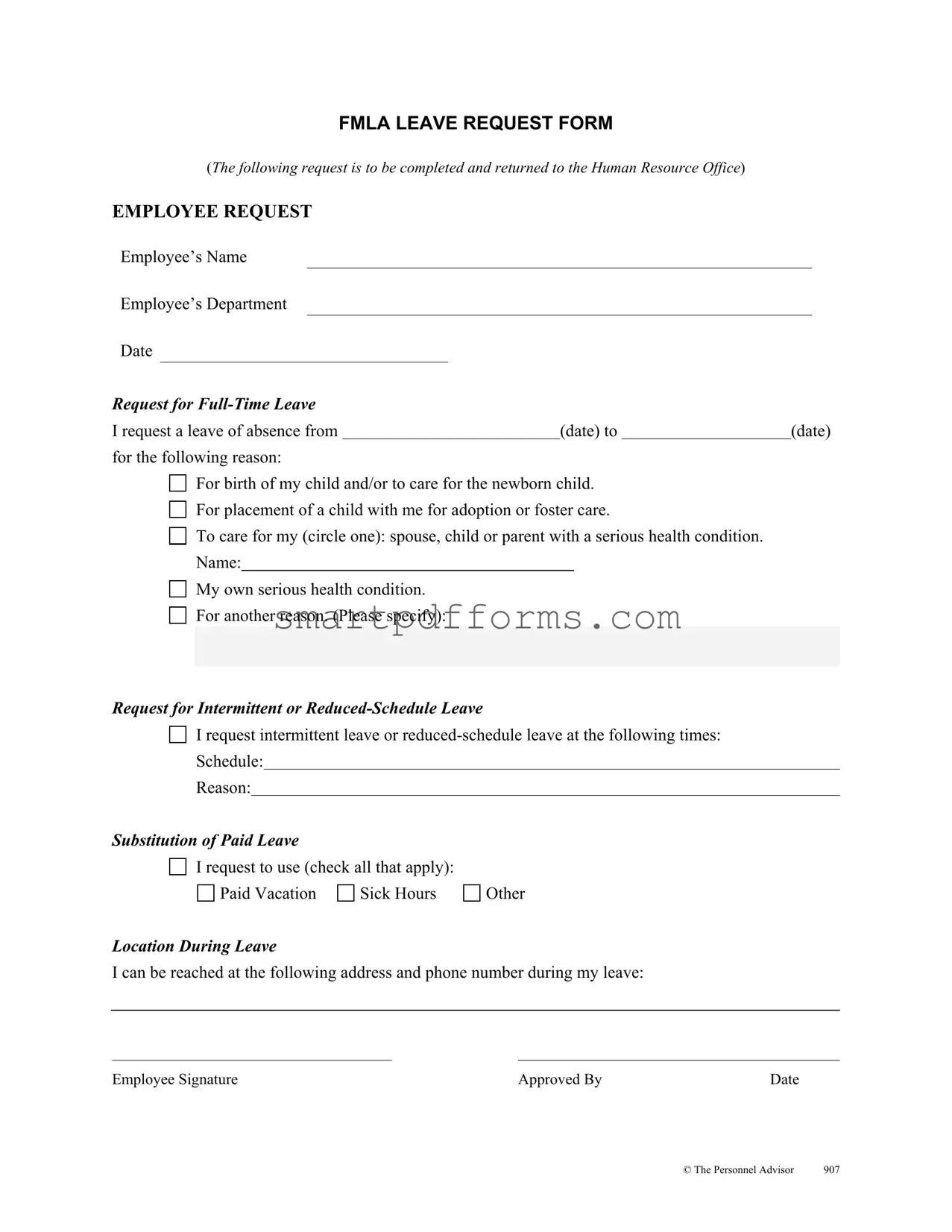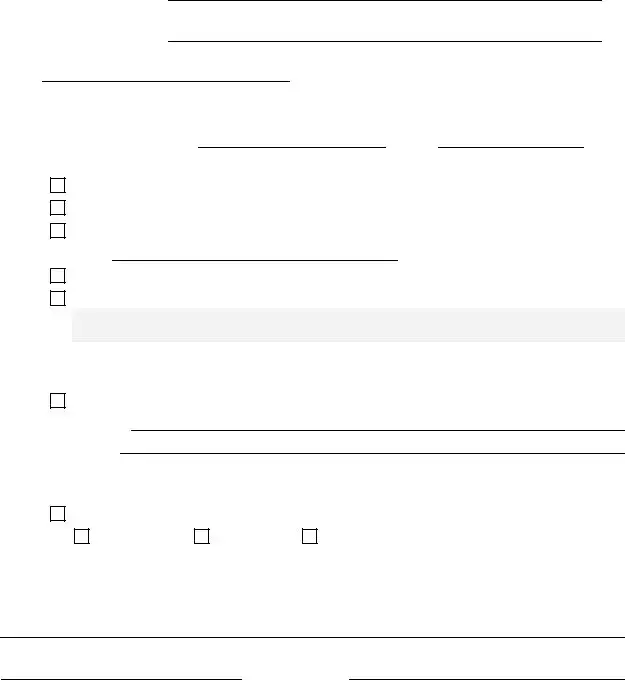Blank Fmla Leave PDF Template
The Family and Medical Leave Act (FMLA) Leave Request Form is a crucial document that employees use to request leave from their jobs for specific family and medical reasons, as outlined by federal law. It enables employees to apply for full-time leave, intermittent leave, or reduced-schedule leave for reasons including the birth or adoption of a child, to care for a close family member with a serious health condition, or for their own serious health condition. This form must be completed and returned to the Human Resource Office to initiate the process. To begin your leave request, click the button below to fill out the FMLA Leave Form.
Make This Document Now

